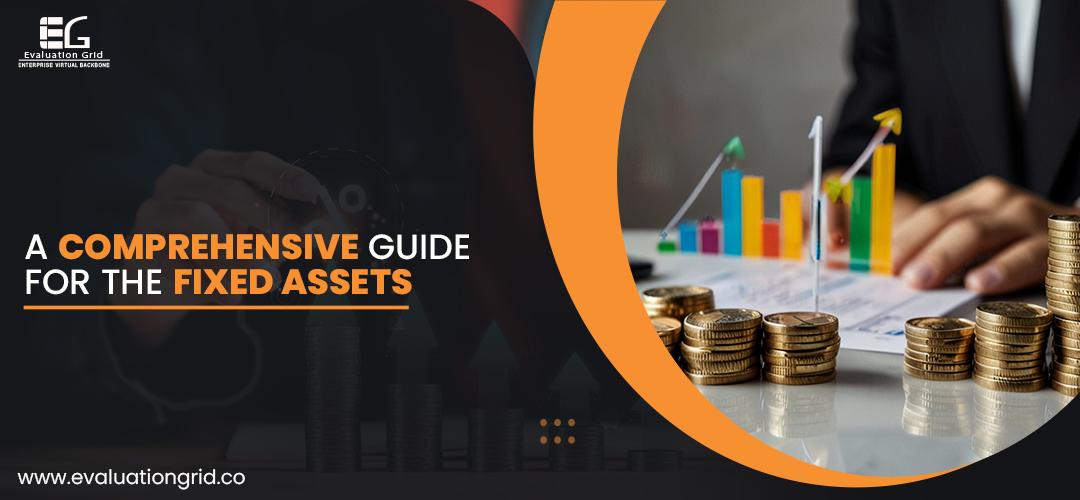Long-term business growth and stability depend on efficient fixed assets management. These assets, including buildings, machinery, and equipment, are the backbone of operations, impacting financial planning, depreciation, and investment decisions. Proper management not only ensures compliance and cost control but also maximizes asset value and operational efficiency. This article explores fixed assets, their types, key differences, and the benefits of managing them effectively.
What Are Fixed Assets?
Non-current assets, or fixed assets, are long-term tangible items used to produce commodities and services. These assets are for company use, not selling. They usually last more than a year and are essential to corporate operations. Buildings, machinery, office equipment, and cars are fixed assets. These assets are important for a company’s operations and infrastructure.
Depreciation is a natural process that happens to all fixed assets over time. Their depreciation is something that companies need to keep an eye on in their financial accounts because their worth drops as they get older. Because of the effects on tax reporting and budgeting, efficient management of fixed assets becomes essential to the financial plan of any company.
Types of Fixed Assets
There are many different kinds of fixed assets, and each one is useful in some way for a company. Here are the primary groups:
Tangible Fixed Assets
Items that a company owns and uses in its day-to-day operations and have a quantitative value are called tangible fixed assets. The success and expansion of any company depends on these assets.
- Buildings: Buildings such as offices, warehouses, and factories that are owned by the company are included in this category. In addition to being necessary for housing operations, these rooms have the potential to generate cash through leasing.
- Machinery and Equipment: All the actual implements used in manufacturing and providing services fall under this category. Equipment such as computers, printers, and machinery used in production are examples of such essential devices.
- Vehicles: Companies often have their own collection of automobiles, trucks, or other vehicles specifically designed to transport employees, supplies, or heavy machinery. The logistics, delivery, and employee mobility industries rely heavily on these assets.
- Furniture and Fixtures: The building blocks of any efficient and effective workplace include durable furniture such as desks, chairs, shelves, and lighting systems. For a company to function well, several assets are necessary.
Intangible Fixed Asset
The term “intangible fixed assets” refers to a company’s valuable but immaterial resources that are still essential to its success. These resources could consist of:
- Patents: A patent is a legal document that grants the owner of an invention, idea, or technique the right to use it exclusively for a certain time. They offer an advantage in the market by preventing others from producing, using, or selling the idea without authorization.
- Trademarks: Trademarks, company names, symbols, or designs that have legal protection. A company’s trademark is a symbol of its identity and what sets it apart from competitors’ offerings.
- Goodwill: The worth that comes from a company’s standing in the market, the devotion of its customers, and the perception of its brand. Goodwill is intangible yet plays an important part in determining a company’s worth in an acquisition or merger.
Natural Resources
Natural resources are assets that businesses can use or extract in the future. Among them are:
- Timber: Wood from which companies make paper, furniture, and building supplies is known as a forest. The availability and possibilities for sustainable usage of timber define its worth.
- Oil & Gas: Real estate or other assets that are rich in natural gas or oil that can be extracted and used for economic purposes. In the long run, these assets can help raise a company’s worth.
- Minerals: Industrially important resources, like coal, precious stones, and metals, can be found on mineral-rich land or at mining sites. Market demand and extraction costs determine the value of these resources.
Differences Between Fixed Assets and Other Assets
It is essential to have a clear difference between fixed asset and current assets. Their function and durability are the main differentiators:
Fixed Assets: These assets will continue to be valuable to the company for at least another year, if not longer. Businesses primarily use them for operational support and income generation rather than resale. These are essential to the operation of the different things for the business like buildings, machinery, and equipment.
Current Assets: These assets will be turned into cash or used up within a year, hence they are considered short-term. Inventory, accounts payable, and cash are all common examples because they are more liquid and easy for a business to get to every day.
Intangible Assets: Although they lack a tangible form, intangible assets are just as valuable as their physical counterparts. A company builds its distinctive identity and competitive advantages through intellectual property, including patents, trademarks, and copyrights.
The use and lifetime of these assets are the key differentiators. In contrast to current assets, which are more liquid and focused toward meeting short-term demands, fixed asset support long-term activities.
Benefits of Managing Fixed Asset
For several reasons, it is essential for a company to have good fixed asset management. The main advantages are as follows:
- Depreciation Management: Businesses can lower their taxable income by controlling the depreciation of their fixed assets. Businesses can better manage their cash flow and take advantage of tax deductions with accurate depreciation accounting.
- Improved Financial Reporting: Financial statements should accurately reflect the worth of a company’s physical resources, which can only be achieved by accurate tracking of fixed assets. It helps companies stick to rules and regulations of accounting, which in turn helps stakeholders, auditors, and investors know the company better.
- Enhanced Asset Utilization: With good fixed asset management, companies can monitor the use and condition of their assets. Companies can make better decisions about maintenance, upgrades, or asset disposal when they routinely monitor these assets and find unused equipment or machinery.
- Cost Savings: Regular maintenance extends the life of fixed assets and lessens the frequency of costly repairs or replacements. It also helps organizations in not buying assets in excess, so they only invest when absolutely needed.
- Increased Operational Efficiency: Every company relies on its fixed asset, such as vehicles, machinery, and office equipment, to carry out its day-to-day operations. Companies may cut down on downtime, increase productivity, and simplify operations by keeping these assets well-maintained and using them to their full potential.
- Strategic Planning and Budgeting: When companies keep detailed records of their fixed assets, they are better able to plan for investments and renovations in the future. Proper asset management enables accurate spending forecasts, allowing for better financial planning and budgeting.
- Regulatory Compliance: Asset monitoring and depreciation are subject to strict regulations that many sectors must adhere to. To stay in compliance with these regulatory requirements and avoid fines and penalties, businesses need to manage their fixed assets properly.
How Evaluation Grid Helps You in Managing Fixed Asset Efficiently?
Fixed asset management requires tracking and appraisal. Evaluation Grid, an asset management company, helps organizations improve Fixed asset tracking with specialized services. Evaluation Grid helps firms manage their fixed asset while lowering risks and expenses by using creative approaches like document imaging, physical record storage, and recovery services.
The Evaluation Grid’s asset management services help firms increase operational efficiency and industry compliance. Evaluation Grid has the tools and knowledge to maximize asset value for physical assets like machinery and office equipment and intangible assets like intellectual property.
Their extensive services serve healthcare, finance, and education. Evaluation Grid helps firms improve asset management, operational efficiency, and financial reporting with a focus on security and scalability.
Conclusion
Companies that want to maximize their operations and secure their growth in the long run must have a firm grasp of fixed assets. These physical assets not only add value to a business over time, but they additionally increase profits and provide tax breaks. Businesses can stay ahead of the competition and improve how they handle their assets through working with experts like Evaluation Grid.
Let us make your fixed asset management a pleasant ride. Get in touch with the Evaluation grid today!






